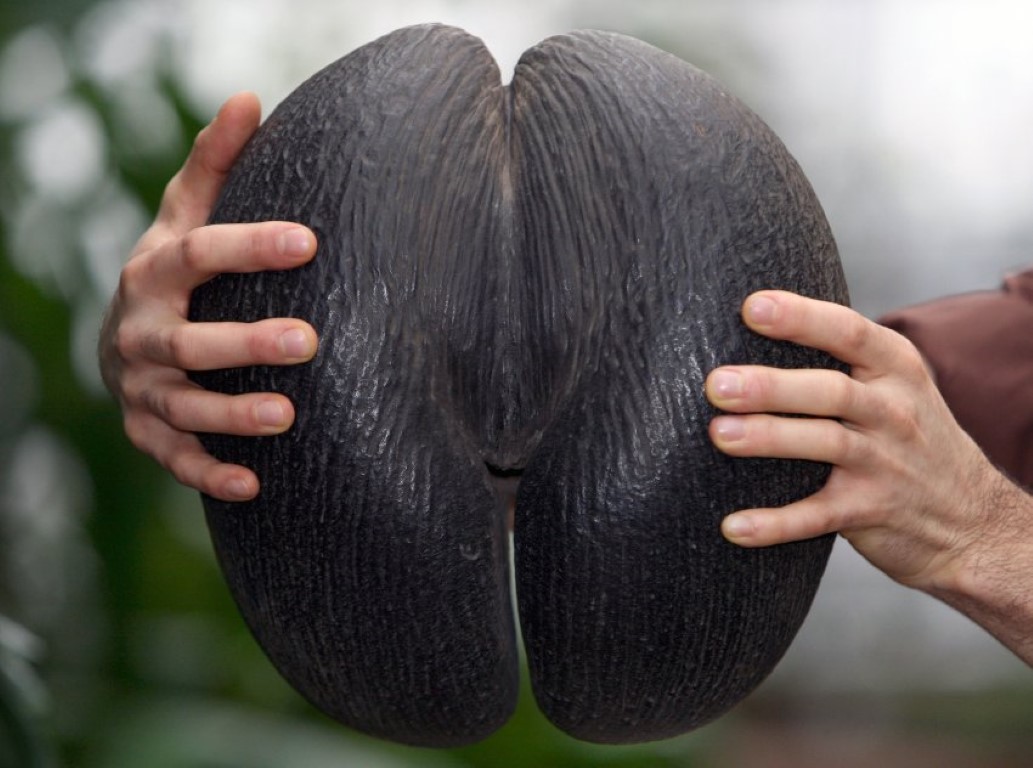A fabled palm thrives in the stunning Seychelles islands in the Indian Ocean.
The Lodoicea maldivica, commonly referred to as the coco-de-mer or double coconut, is well recognized for yielding the biggest and largest seeds in the entire world.
Scientists, tourists, and poachers all find these striking seeds appealing due to their intriguing form and remarkable 25kg weight, as well as their half-meter length. There is a legend that a pair of coconuts has therapeutic qualities. Even though their “healing powers” are still unknown, single palm nuts are nonetheless much sought after as an aesthetic marvel, fetching prices of up to £2,000.
World’s Largest Seeds Faces High Danger
Only around 8,000 wild, mature Lodoicea palms remain on the two islands of Praslin and Curieuse as a result of overharvesting. The IUCN Red List of Threatened Species has the species classified as Endangered. To save them from becoming extinct, seeds are closely guarded—sometimes even kept in cages—in the wild and at botanical gardens throughout the world that have been able to grow them.
Though considerably smaller than that of the dual coconut (up to 10cm long), the seeds from palms that are connected to the dual coconut are among the biggest in the world and significantly larger than the majority of palm seeds.
Straight Into The Lab From An Island
At Kew, we’ve been attempting to determine what would have caused Lodoicea and its cousins to evolve huge seeds, as well as what might have caused the double coconut to grow to such an enormous size. To do that, we analyzed and aggregated data from seed sizes, DNA, and other sources on the form, structure, and habitat of these palms.
According to our research, several requirements have to be satisfied in a certain order for the twin coconut to continue to exist. The general structure had to be satisfied initially. To physically accommodate huge seeds, plants are required to be enormous with few branches on their inflorescences (the blooming stalk).
The presence of shaded areas and/or big animals that disperse seeds was the second need. This indicates that huge seeds were favorable to plants because they held nutrients that could support the development of seedlings until they hit the canopy’s light or until there were large enough animals to be capable of spreading them.
Thirdly, a deficiency of dispersion agent thereafter. It was better to have a smaller number of seeds without dispersers to reduce plant competition beneath the “mother tree.” Furthermore, they can be considerably bigger since fewer seeds were generated. The second circumstance, which most likely encouraged the growth of their big seeds, is where the familial connection of the twin coconut ended.

